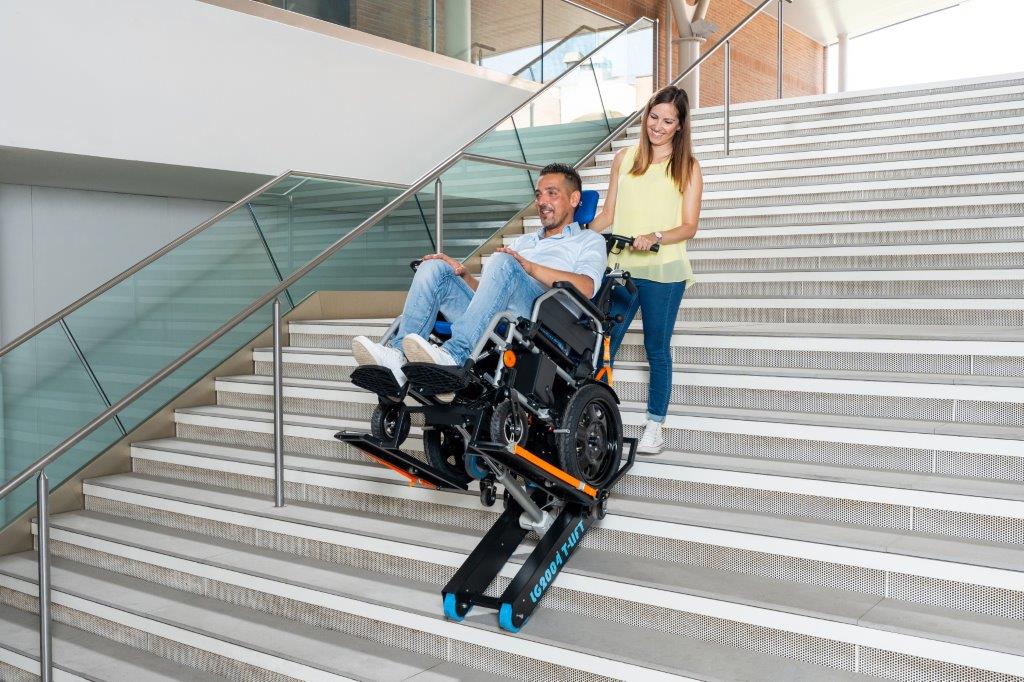Top 3 Mistakes Facilities Managers Make When Choosing Evacuation Equipment And how to avoid them…

The Crucial Role of PEEPs in High-Rise Residential Buildings: Learning from Grenfell
Enhancing Safety with Personal Emergency Evacuation Plans (PEEPs)
In the wake of the Grenfell Tower tragedy, the importance of Personal Emergency Evacuation Plans (PEEPs) for high-rise residential buildings has never been more critical. These plans are designed to ensure that all residents, particularly those with disabilities or mobility issues, have a clear and actionable escape route during emergencies.
Key Features of PEEPs
- Self-Identification by Residents
Residents who may struggle to self-evacuate in an emergency must voluntarily identify themselves to the Responsible Person (RP) managing the building. This identification is the first step in creating a tailored evacuation plan that addresses the specific needs of each individual.
- Responsibility of the Responsible Person (RP)
RPs, including building owners and managers, are tasked with preparing a PEEP for each identified resident. This involves consulting with the resident to ensure the plan is customised to their unique requirements and kept up to date. The RP must also ensure that all residents are informed about the availability of PEEPs and encouraged to come forward if they need one.
- Information Accessibility
Critical information regarding residents who need assistance must be stored in an easily accessible information box within the premises. This enables fire and rescue services to quickly access vital details during an evacuation, facilitating a more efficient rescue operation.
- Collaboration and Communication
The successful implementation of PEEPs relies heavily on effective communication and cooperation between RPs, residents, and fire and rescue services. Regular updates and continuous engagement are essential to keep PEEPs relevant and accurate.
The new regulations introduced post-Grenfell aim to enhance the effectiveness of PEEPs significantly.
Positive Impact of New Regulations
By mandating that all high-rise residential buildings have PEEPs for residents who need them, the regulations ensure a higher standard of safety and preparedness. These measures aim to protect vulnerable residents and provide a clear protocol for emergencies, ultimately saving lives.
Common Oversights by Responsible Persons
Despite the regulations, there are common pitfalls that RPs may overlook including:
- Failure to Encourage Self-Identification: Many residents might be unaware of their right to a PEEP or hesitant to come forward. RPs must actively encourage residents to self-identify and provide clear information about the process.
- Lack of Regular Updates: PEEPs must be reviewed and updated regularly to remain effective. Changes in residents’ health or mobility need to be reflected in the evacuation plans.
- Inadequate Training and Drills: RPs often neglect to conduct regular fire drills that include PEEPs, leaving residents unprepared for an actual emergency.
Learnings from Grenfell and Addressing Current Challenges
Government guidance, such as the Fire Safety Risk Assessment Means of Escape for Disabled People, clearly states that building responsibility includes creating evacuation plans for all occupants, including disabled individuals, without reliance on the Fire and Rescue Service.
This has been a consistent requirement since 2007, and the legal framework has not been altered to exclude disabled residents.
However, a recently published Government research briefing titled “Fire Safety in Houses and Flats,” seemingly contradicts existing guidance by suggesting that responsible persons are not obligated to provide emergency evacuation plans for disabled residents of flats.
This could cause confusion and raise significant concern with facilities managers as it conflicts with the established requirements outlined in Article 14(2)(b) of the Fire Safety Order, which mandates that “in the event of danger, it must be possible for persons to evacuate the premises as quickly as possible.” Additionally, under the Equality Act 2010 and the Public Sector Equality Duty, discrimination against disabled individuals is prohibited. Providing fire escape means for non-disabled people while excluding those who are disabled is inherently discriminatory.
It is therefore crucial for facilities managers, building owners and all responsible persons to adhere to PEEPs regulations and collaborate with established experts like Evaccess.
By leveraging the expertise and innovative solutions from Evaccess, responsible persons can effectively address the unique evacuation needs of every resident.
Evaccess Products Supporting PEEPs – PEEPS Courses
Facilities managers (FMs) are typically adept at conducting risk assessments and method statements, integral to ensuring safety and compliance within building management. However, Personal Emergency Evacuation Plans (PEEPs), despite their vital role in protecting individuals during emergencies, often do not receive equivalent emphasis.
Evaccess recognises this gap and offers a range of online training courses tailored to help FMs effectively implement PEEPs across diverse environments—not just in residential settings, but also in workplaces, educational institutions, and commercial properties.
These courses delve into both the practical and legal nuances of evacuation planning for disabled and vulnerable individuals. Through interactive modules and practical tools, such as fillable form templates for documenting PEEPs, Evaccess equips FMs with essential skills and knowledge.
This proactive approach not only aids compliance but also enhances the overall safety culture within facilities, ensuring that all individuals have effective evacuation strategies tailored to their needs.
Find out more here: https://evaccess.uk/training/e-learning-online-courses/
Elevating Safety: 2 Essential Evaccess Products for PEEPs in High-Rise Buildings.
The LG2004 T-Lift: This innovative model can transport a person and their wheelchair up and down stairs without the need for physical lifting. With a maximum weight capacity of 300KG and operable by a single person, the T-Lift is a game-changer in emergency evacuation, providing a dignified and safe method for those in wheelchairs to evacuate.
The Gecko: Designed for versatility, the Gecko is effective on straight, spiral, and flared stairs. Its anti-tilt feature significantly reduces the physical burden on operators, supporting a maximum capacity of 180kg.
This device is an excellent solution for buildings with complex stair configurations.
For a closer look at their range of products, visit their products page: https://evaccess.uk/products/
Training
After equipment selection, comprehensive training is provided to operators. The programs delivered by Evaccess include “Train the Trainer” and “Operator Training,” ensuring that staff are proficient in using the evacuation devices.
For a closer look at their training options, visit their training section: https://evaccess.uk/training/
Equipment Servicing
Regular servicing ensures that all equipment remains in optimal condition. The experienced engineers at Evaccess perform maintenance checks and encourage customers to regularly test their equipment to pre-empt any issues, from battery faults to external damages.
The Evaccess Commitment
The Evaccess team is dedicated to supporting you by offering guidance and answering any queries. By choosing Evaccess, facilities managers can meet and exceed modern standards for safety and accessibility, promoting a culture of inclusivity and preparedness in building management.
Call Evaccess for advice and information.
0121 444 3690
Get in. Get Out. Together.



